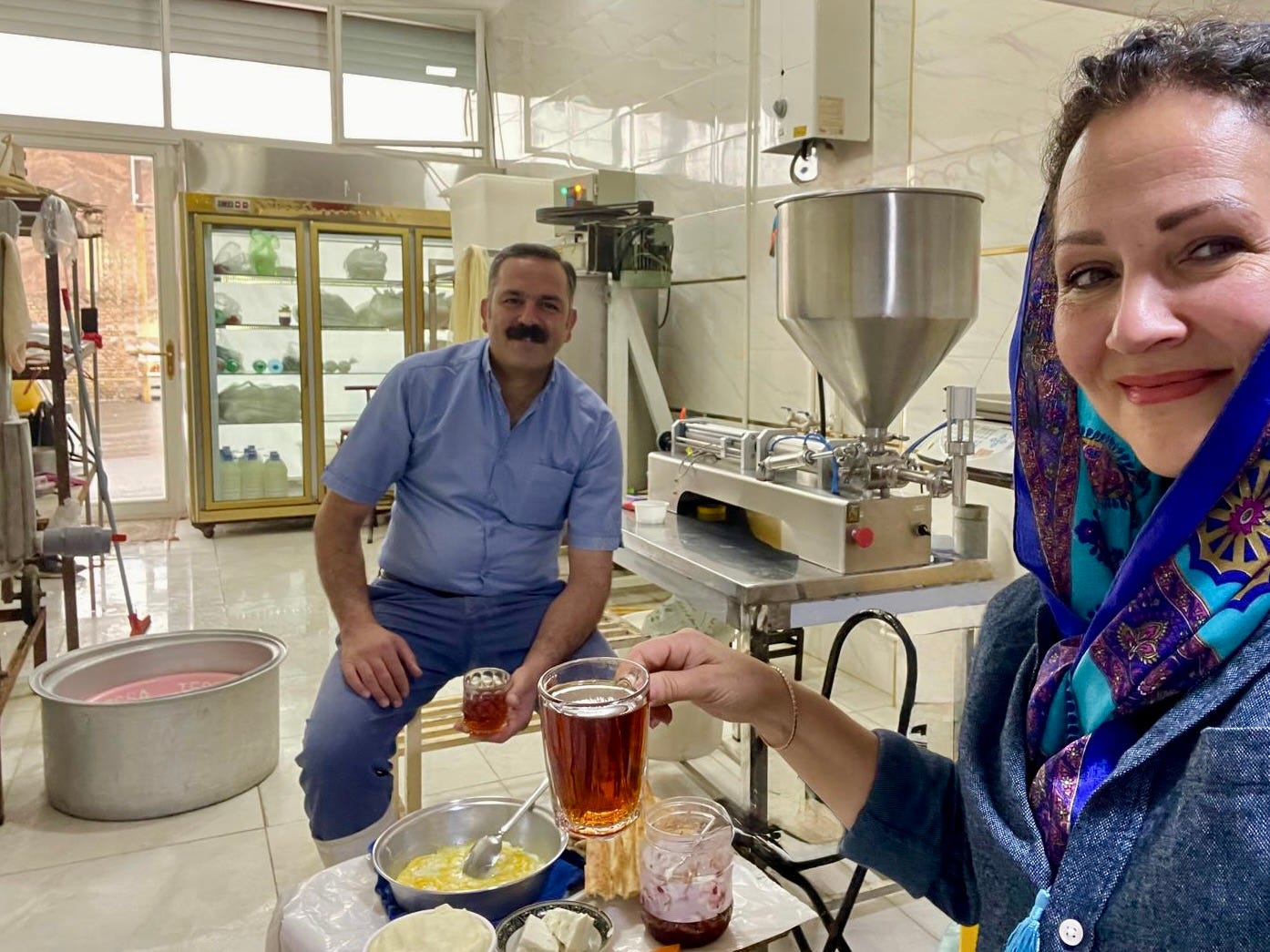
This morning, I got up early and set off for the southern suburbs of Tabriz to visit a gooroot factory, AKA Qurut or Kashk. I was fortunate enough to interview Mr. Sadaghian for my upcoming book Fermented Dairy of Central Asia, due in September. His family has been in the dairy business for generations, and he now prides himself on supplying the best artisanal gooroot from Kurdestan, in Iran, to discerning home cooks in Tabriz.
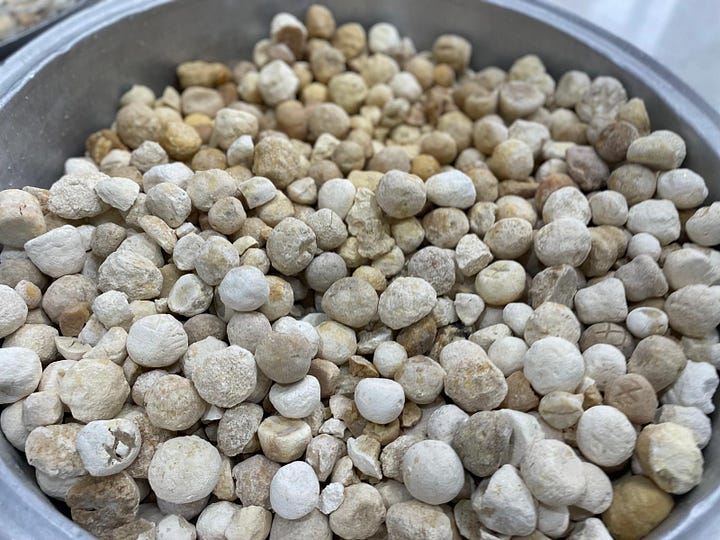
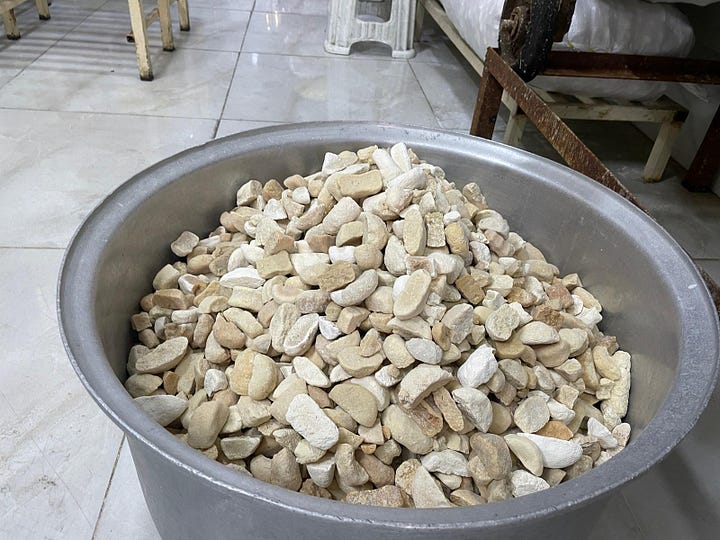
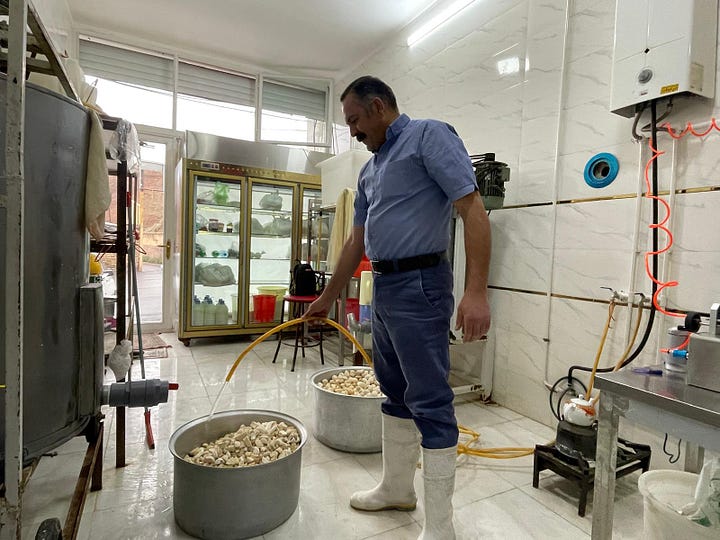
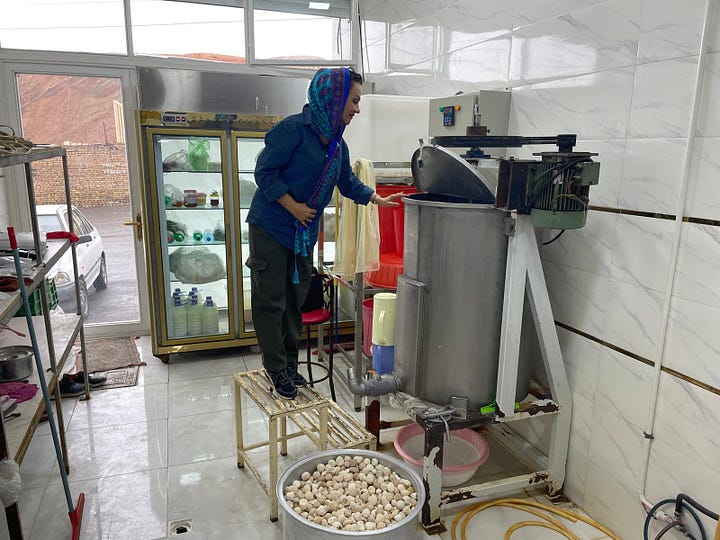
He wanted me to see the entire process. As the rain poured outside (we’ve had the wettest spring on record here), he emptied sacks of gooroot made last summer into large pans, then washed and drained them. These were poured into a gooroot grinder (his own design) alongside water, to be turned into a thick paste before packaging. Everything he did was guided by feel rather than exact measurements. There were sacks of different types of gooroot, there was a particular batch from Mahabad for a physician in Austria who prescribes it for patients with osteoporosis.
Once the machine was running, Farhad Agha made chai and went out to get freshly baked barbari bread. Meanwhile, Mr. Sadaghian fried eggs in their own ghee and laid out breakfast with the best butter and cheese in Iran. He also served his wife Sima Khanum’s rose petal jam. We ate, drank several glasses of chai, and chatted about dairy, sheep herding, and the joy of doing what we love.
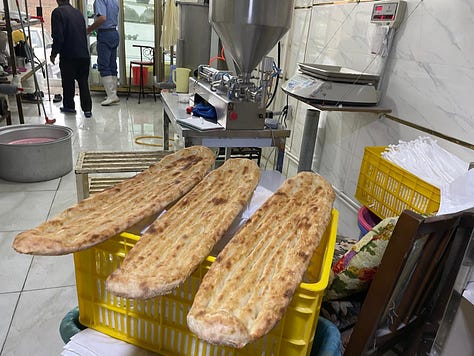
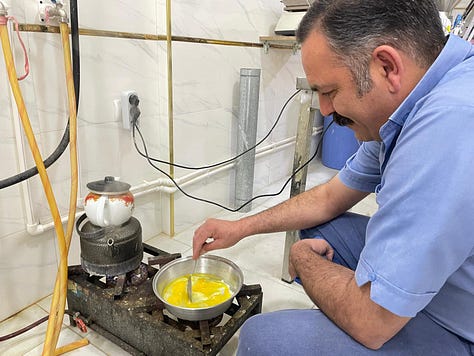
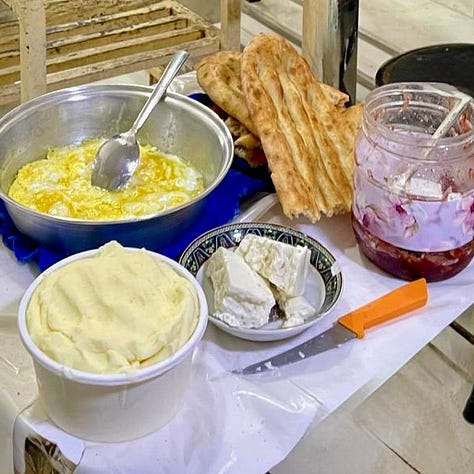
Every now and then, one of them would check the consistency of the gooroot. When it was ready, they passed it through a cloth, and as it was being bagged, customers began arriving to collect their orders. I was sent home with two bags of gooroot and a massive bottle of ayran (doogh). We’ll use the gooroot to make osh and chala joush, and I’ll probably drink half the ayran straight, the rest we’ll use to make Ardebili doughosh.
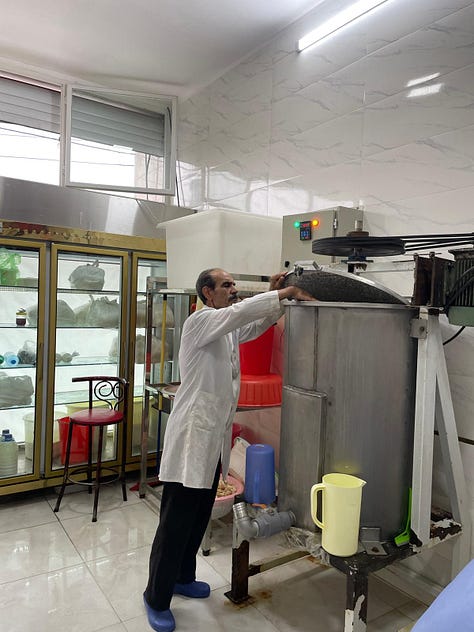
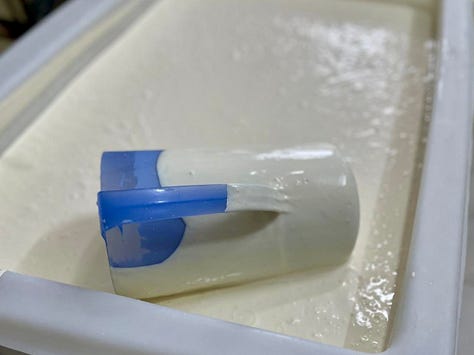
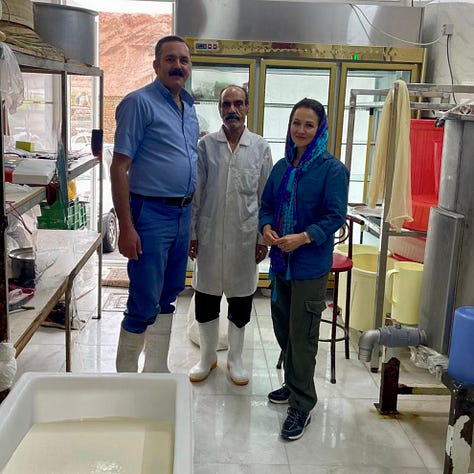




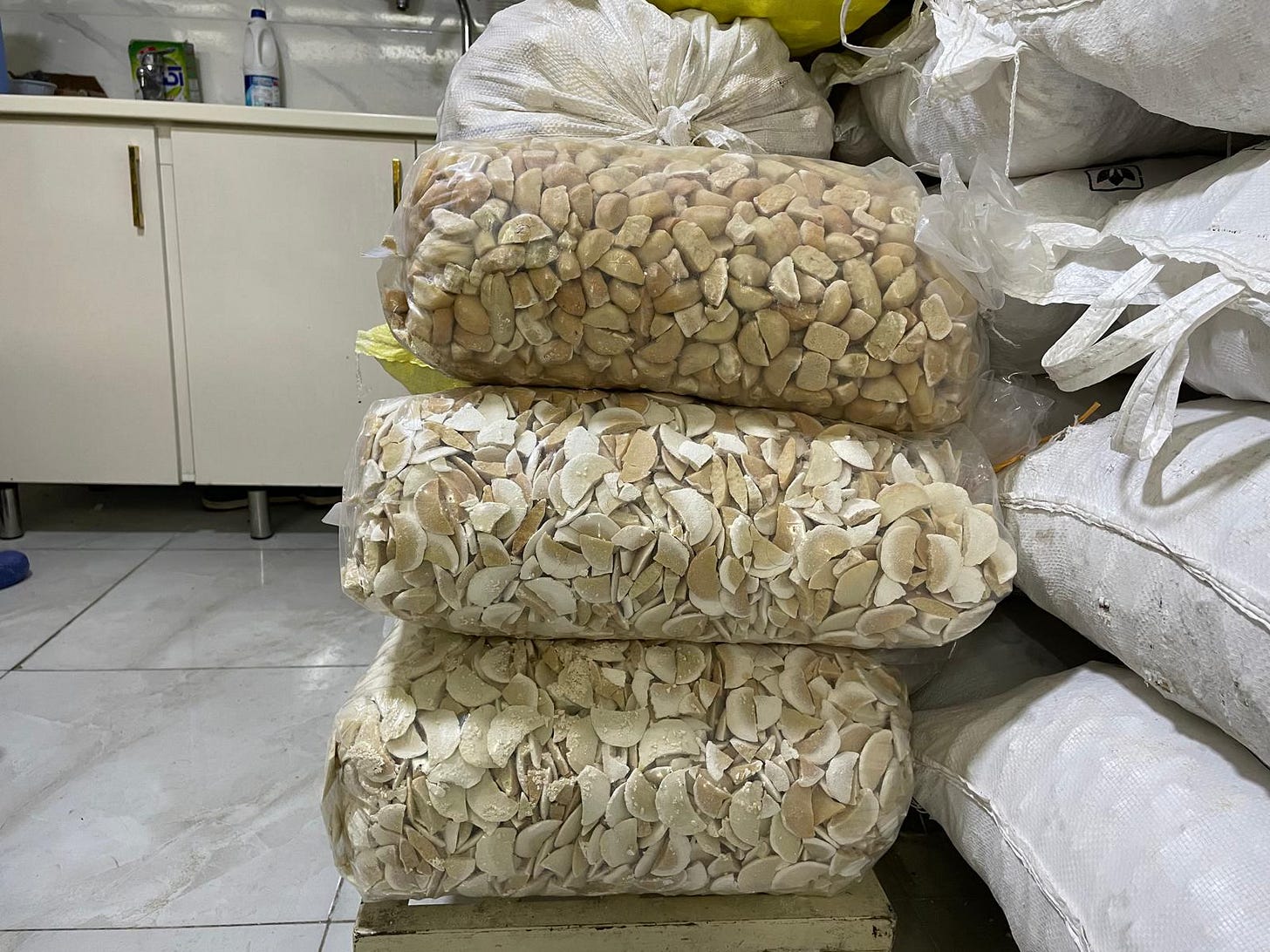
Lovely post thanks. What exactly are gooroot, ayran (doogh), osh and chala joush?